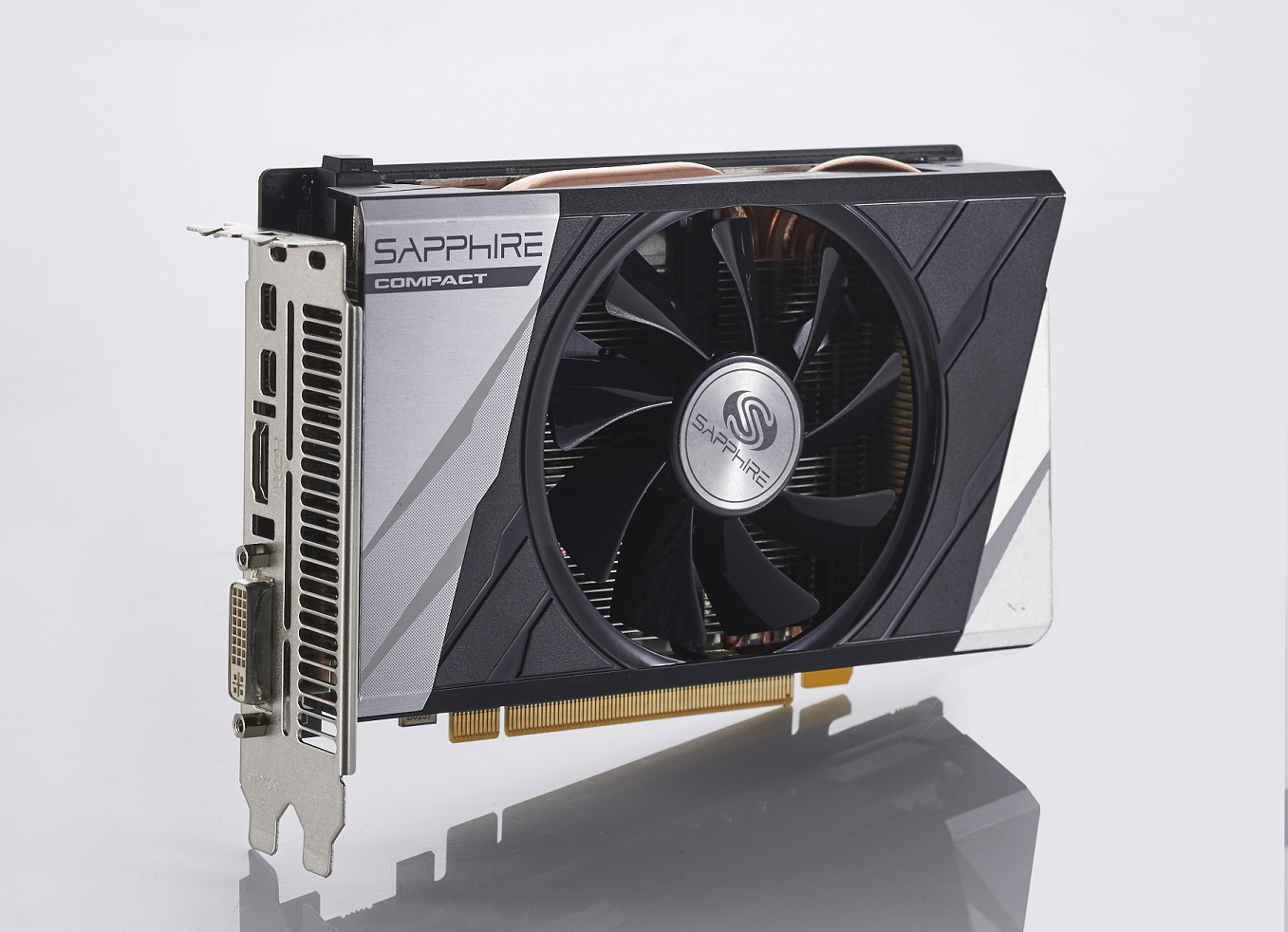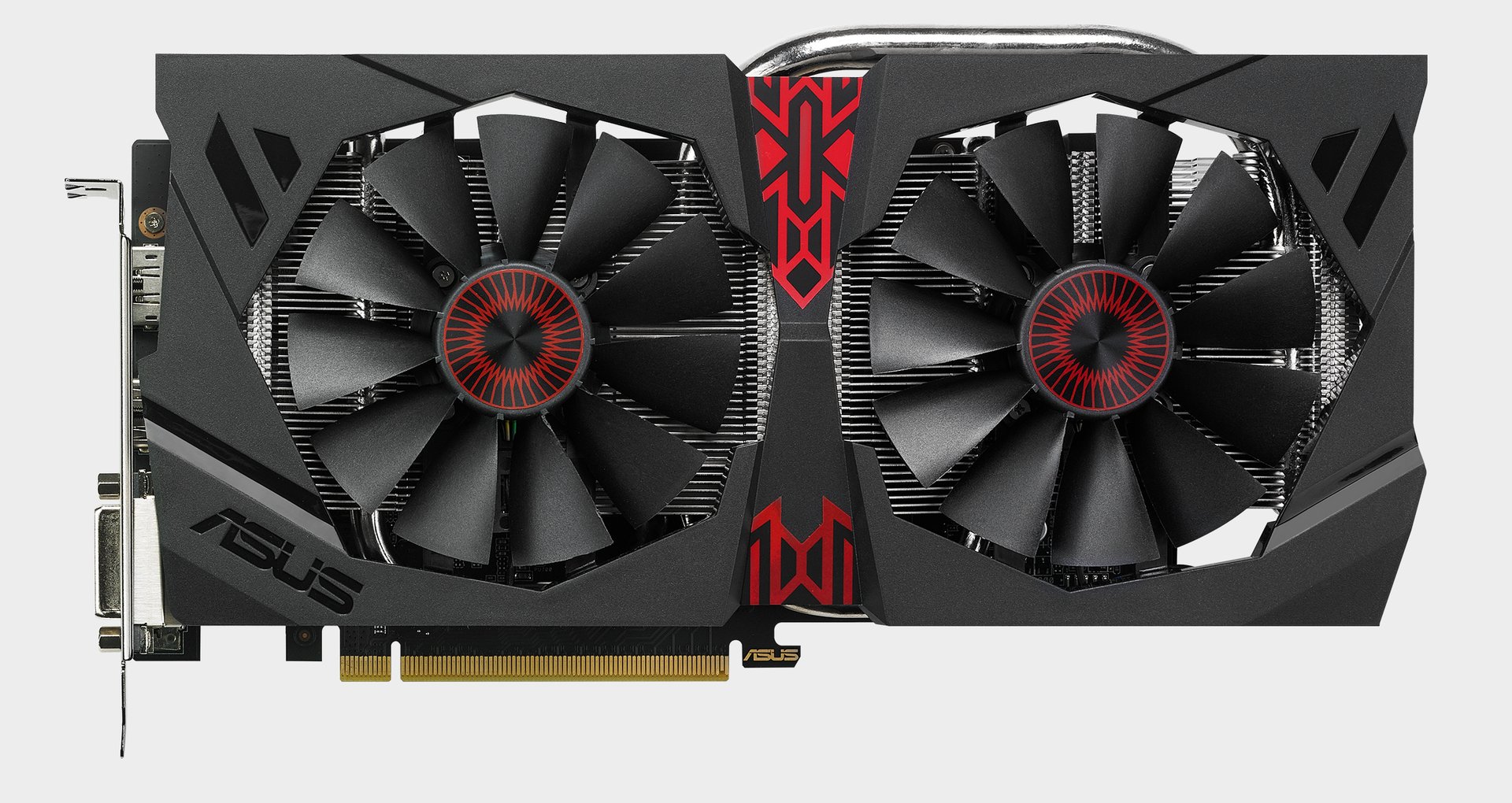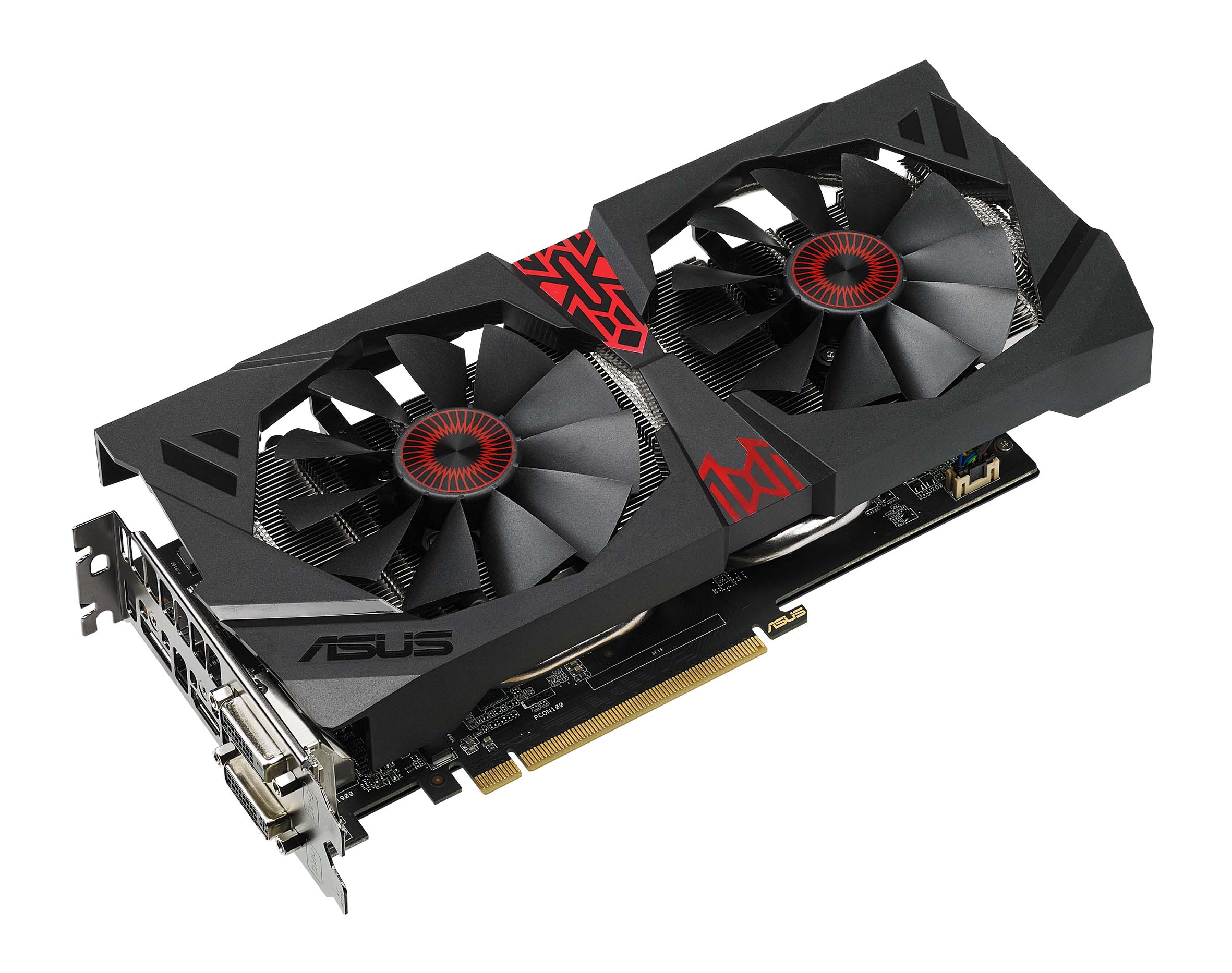Our Verdict
The R9 380X is a solid performer when it comes to 1080p, but for an extra $50, grabbing a R9 390 instead is just too tempting.
PC Gamer's got your back
Five billion transistors, 2048 shader cores, 32 ROPs, 128 TMUs and 4GB of GDDR5 RAM, all sat on top of a cushy 256-bit memory bus. Yep, that’s what you’ll find buried inside of AMD’s latest GPU. Throw in some of Asus's handiwork in the form of a DirectCU II cooler and an after-market PCB on top of that, and you’re looking at a card capable of reaching a comfy core frequency around the 1030 MHz mark. Just enough to make 1080p butter smooth for $250 or £200.
The 380X isn't a brand new graphics processor, though. In fact, it hearkens back to the launch of AMD's R9 285 and the Tonga GPU (GCN 1.2) in September 2014. The eagle-eyed among you will also spot that this particular revamped GPU features 256 more shader cores than AMD's first foray into the Tonga graphical processor. This is actually quite interesting; our theory is that the fully implemented core used in the 380X was originally intended to be the R9 285X, with the 285 being a stripped down version. Due to time constraints, marketing pressure or product timelines, similar to what happened with Intel’s delayed Broadwell CPUs, we never saw the 285X make it to market. A year after the release of the R9 285, the R9 380X joins the rest of the 300 series refreshes as a better performing, fully unlocked Tonga processor.
Core Comparisons
| Row 0 - Cell 0 | AMD R9 390 | AMD R9 380X | AMD R9 285 |
| Shader Cores | 2560 | 2048 | 1792 |
| ROPs | 64 | 32 | 32 |
| Core Clock | 1000 MHz | 970 MHz | 850 MHz |
| Memory Clock | 6 GHz | 5.5 GHz | 5.5 GHz |
| Memory Bus | 512-bit | 256-bit | 256-bit |
| VRAM | 8GB | 4GB | 2GB |
| Onboard Power | 250W | 195W | 195W |
| Architecture | GCN 1.1 | GCN 1.2 | GCN 1.2 |
Still impressive
This may be year-old hardware, but that original Tonga GPU still has a lot to give. Think of Tonga then as a stripped down, more power efficient Fiji core. Thanks to some impressive changes to the manufacturing process and overall design, AMD's managed to reduce Fiji's egg-frying power requirements, without compromising on the most important factor: overall performance per watt. At the time this made Tonga a fantastic GPU solution for smaller form factor builds. Requiring less power and touting a far lower TDP than the R9 290 and 290X, it was quite common to see these cards pop up in ITX sized cards.
Now with AMD's R9 Nano taking centre stage in the world of ITX builds, the R9 380X finally has the opportunity to cement itself as a fully fledged graphics card, with a full core complement and a higher clock frequency than its predecessor.

Power Consumption and design thoughts
The R9 380X still functions off two 6-pin power connectors. In our test system, even at full load we only managed to pull a total of 198W from the wall, and 254W when we overclocked it to the limit. If you’re still looking to build a smaller setup, and need a cheap affordable graphics card to power your miniature behemoth, the R9 380X certainly fits the bill.
Alas the biggest criticism of AMD's R9 380X revolves around the bus. It’s still stuck on the 256-bit memory bus, and could’ve used an increase up to 384-bit for the sake of additional bandwidth. Although without increasing both the number of shader cores and ROPs as well, there would be little to no point in changing over from that 256-bit AMD staple anyway. All in all, we just wanted a little more from this card at its price point.

1080p & 1440p performance
For $250 you'd expect to be able to game quite comfortably at 1080p, and that’s what the R9 380X delivers. In our testing we found that in the majority of AAA games we could roughly hit the 50-60fps mark at 1080p and maximum settings. Obviously some games like GTA V will take that down a few notches, but all in all it sit's comfortably there. My problem here lies with how AMD is selling this card to us. According to the boys in red, it's a true entry level GPU to gaming at 1440p.
Now I don't know about you, but 25 - 35 fps isn't what I consider a comfortable gaming experience, and certainly not at Quad HD. Out of our entire suite of benchmarks only three games got above that 35fps barrier, and even then, only one of them hit the sweet spot that is 60fps. Ironically, the game that did seem to pull ahead of the others for us was Batman: Arkham Knight; raking in a stunning 47fps at 1440p.
The 380X doesn’t come close to delivering 60 fps in modern, demanding AAA games at those resolutions, but honestly, we know those aren’t the only games out there. Hell, my most played games range from Minecraft, to WoW, to Kerbal Space Program. And for those sorts of games, you're going to experience a perfectly enjoyable 1440p experience.
1080p Benchmarks (Min / Avg fps)
| Row 0 - Cell 0 | Asus Strix R9 380X | Gigabyte Windforce 3 GTX 970 |
| World of Warcraft | 125 / 196 | 204 / 256 |
| Attila Total War | 26 / 33 | 38 / 47 |
| Project Cars | 30 / 35 | 37.6 / 43.1 |
| Witcher 3: The Wild Hunt | 23 / 37 | 18 / 55 |
| Shadow of Mordor | 26 / 57 | 47 / 70 |
| Star Citizen: Hangar Walk | 33 / 46 | 36 / 55 |
| Batman: Arkham Knight | 47 / 75 | 63 / 92 |
| 3D Mark: Firestrike | 8,106 | 10,297 |
| Heaven | 8 / 44 | 28 / 66 |
1440p Benchmarks (Min / Avg fps)
| Asus Strix R9 380X | Gigabyte Windforce 3 GTX 970 | |
| World of Warcraft | 94 / 122 | 115 / 159 |
| Attila Total War | 16 / 22 | 23 / 31 |
| Project Cars | 20 / 24 | 26 / 29 |
| Witcher 3: The Wild Hunt | 22 / 26 | 23 / 38 |
| Shadow of Mordor | 19 / 38 | 35 / 43 |
| Star Citizen: Hangar Walk | 16 / 24 | 17 / 41 |
| Batman: Arkham Knight | 27 / 47 | 39 / 62 |
| 3D Mark: Firestrike Extreme | 4,041 | 5,337 |
| Heaven | 7 / 27 | 8 / 39 |
All tests were performed with an Intel Core i7-6700K, 16GB of Crucial Ballistix Elite 2400MHz DDR4, a Be Quiet 1200W Dark Power Pro Platinum PSU and a 2TB Samsung 850 Pro SSD.*
Where does this card honestly sit?
At this price point, the R9 380X interestingly has no competition. It seems designed and positioned to be a response to Nvidia’s GTX 960 Ti...except there is no 960 Ti. There's not a single muttering of that card, or any other Titanium edition for that matter, coming from the Nvidia GPU foundries at all. If anything, it'd seem that with Pascal rumoured to be launching early to mid 2016 the company is focusing solely on that, allowing AMD the upper-hand in this particular section of the graphics audience.
However, it's something to bear in mind, if you're dropping £200 on a card, do you really want to skimp out that extra £30 and not just buy yourself a R9 390 instead?
I don't know about you but 25 - 35 fps isn't what I consider a comfortable gaming experience.
Overclocking Majesty
Now we've got all that boring gaming stuff out the way, let's talk about how this card performs once Asus has had their hands on it. The reference AMD R9 380X comes with a standard GPU core clock of around 970 MHz, and 5500 MHz frequency on the memory. Straight out of the factory, Asus, with the help of a new, fully-automated custom PCB, and their almost legendary DirectCU II cooler, throw another 60 MHz on that as standard. Switch on GPU Tweak II and activate the overclocked setting and that figure will bump its way up another 20 MHz, giving you a total of 80 MHz on top of the standard card. It doesn't sound like a lot, but free performance is free performance right?

That's far from where this experience ends, however. If you're brave enough to delve deep into the heart of Asus's GPU Tweak II software (and by this we mean click advanced settings), you can easily blow that overclock wide open. In our testing we achieved a max stable overclock of 1165 MHz on the core clock (+115 MHz over Asus's stock), and 6500 MHz (+800 MHz) on the memory clock, utilising 1293 mV on the GPU core voltage and with the power target ramped up to 120%
Come one, come all, all ye naysayers. In games we saw this improve our average frame rates by 4-5fps, more noticeable at 1080p than 1440p or higher, but honestly if you're running this card at 4K you've lost your proverbial marbles.
Fan Noise & Temperature
Besides all of those fancy numbers and overall frame-wrenching improvements we didn't see a huge increase in temperature or overall fan speed, even at some of the more aggressive overclocks we tried.
At default the card does run pretty toasty. Asus's latest generation of Strix cards include 0dB fan technology as standard, ensuring that the dual fan setup doesn't start to spin up until the card is actually being pushed severely in game. What this does mean is you're left with a GPU that can easily run at 40-50 degrees C on desktop without much trouble. That being said it’s hardly detrimental to the GPU or your everyday running costs either, although it may increase overall internal case temperatures.
Rather impressively, when we did push the GPU particularly hard we only noticed a load temperature of a maximum 64 degrees C, and even after some severe overclocking that only increased to 69. No doubt this is in thanks to Asus's triple heat pipe solution. It's important to point here that this card is big. Something we're seeing more often with Asus's latest cards is an increase in height as opposed to length. Although that sounds bad, this does seem to be adding additional surface area, allowing for greater heat dissipation from those mighty twin fans, but if you're worried about your side window touching this monster you ought to check out the dimensions before you commit to a purchase.
Who is it for then?
The 380X is is a very interesting mid-range card. It definitely outperforms the GTX 960 and the AMD R9 380, whilst equally falling short of the other side of that coin, with both the R9 390 and Nvidia's GTX 970 running rings around it. And that puts us in a bit of a conundrum as to where to actually place it. It's just not ready for the majority of 1440p gaming. But if you are looking for a top of the line 1080p, 60fps, low-powered gaming card, the R9 380X is a solid and dependable choice.
For price to performance, for the time being at least, it's unmatched. However for £30-40 you could easily slip into that next echelon of GPU heaven, where 2560x1440 gaming becomes less of a dream and more a reality.
*We understand the GTX 970 is a non-contest card, it's merely here for comparison's sake until a time where we can fully complete our benchmark and graph overhaul. Thank you for your patience, this article will be updated as soon as our benchmarking validation is complete.
The R9 380X is a solid performer when it comes to 1080p, but for an extra $50, grabbing a R9 390 instead is just too tempting.
After graduating from the University of Derby in 2014, Zak joined the PC Format and Maximum PC team as its resident staff writer. Specializing in PC building, and all forms of hardware and componentry, he soon worked his way up to editor-in-chief, leading the publication through the covid dark times. Since then, he’s dabbled in PR, working for Corsair for a while as its UK PR specialist, before returning to the fold as a tech journalist once again.
He now operates as a freelance tech editor, writing for all manner of publications, including PC Gamer, Maximum PC, Techradar, Gamesradar, PCGamesN, and Trusted Reviews as well. If there’s something happening in the tech industry it’s highly likely Zak has a strong opinion on it.



